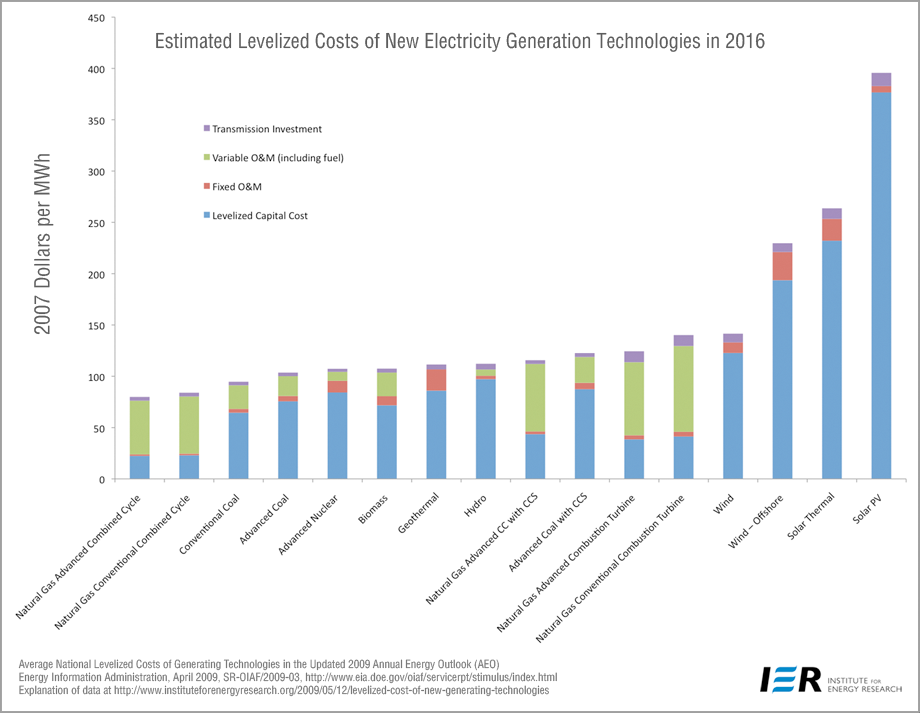In the past, I hardly used EIA's cost data much, partly because their capital cost estimates for nuclear were always too low (the estimates are much more realistic this edition), but mostly because they only presented their cost assumptions that feed into the NEMS model (pdf). They never showed a levelized, unsubsidized, balanced set of cost data for nearly all technologies. Here's IER's explanation of the data:
To determine the most economic technology for the type of demand (base, intermediate, or peaking load) for which new capacity is needed, NEMS competes the technologies based on the economics of their levelized costs. Levelized costs represent the present value of the total cost of building and operating a generating plant over its financial life, converted to equal annual payments and amortized over expected annual generation from an assumed duty cycle.The table below provides the average national levelized costs for the generating technologies represented in the updated AEO2009 reference case. The values shown in the table do not include financial incentives such as state or federal tax credits, which impact the cost and the competitiveness of the technology. These incentives, however, are incorporated in the evaluation of the technologies in NEMS based on current laws and regulations in effect at the time of the modeling exercise, as well as regional differences in the cost and performance of the technology, such as labor rates and availability of wind or sun resources.
Below are IER's chart and table. I'd say the results speak for themselves. Hat tip to Charles Barton!


0 comments:
Post a Comment